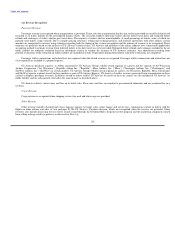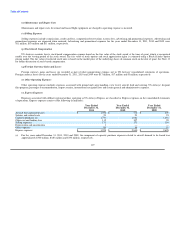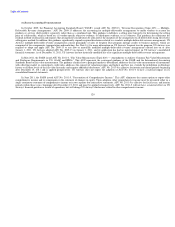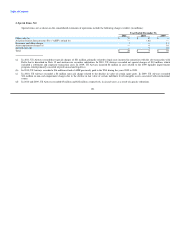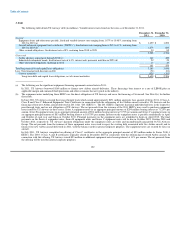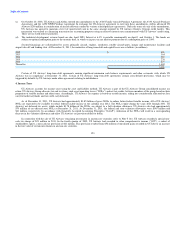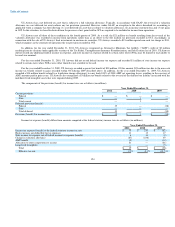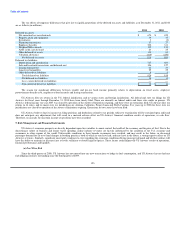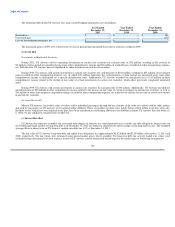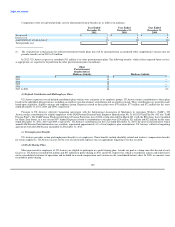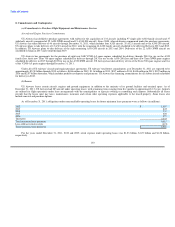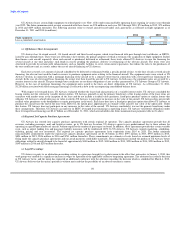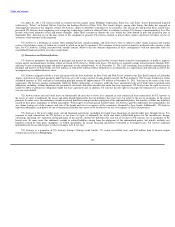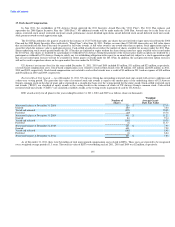US Airways 2011 Annual Report Download - page 128
Download and view the complete annual report
Please find page 128 of the 2011 US Airways annual report below. You can navigate through the pages in the report by either clicking on the pages listed below, or by using the keyword search tool below to find specific information within the annual report.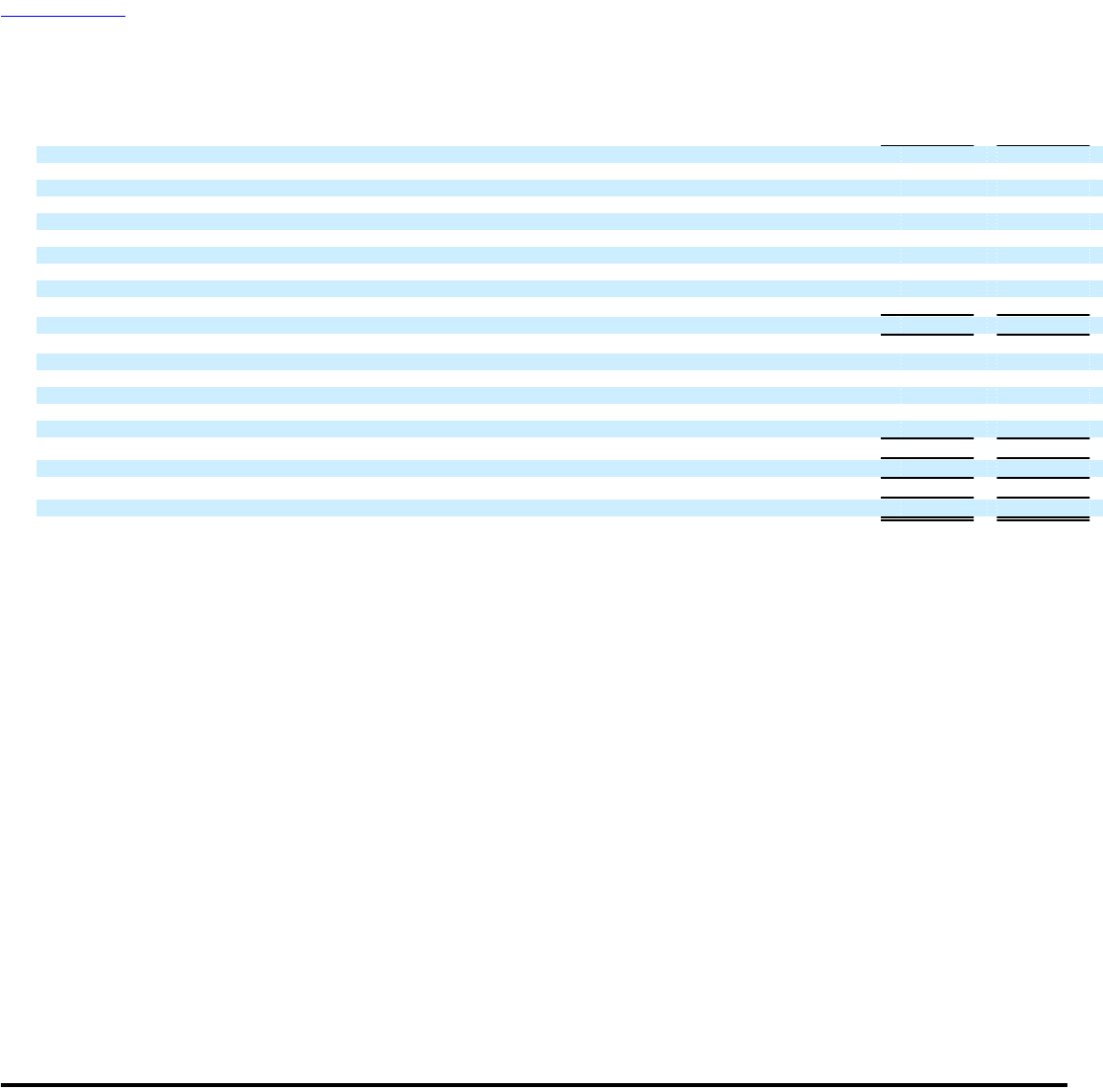
Table of Contents
The tax effects of temporary differences that give rise to significant portions of the deferred tax assets and liabilities as of December 31, 2011 and 2010
are as follows (in millions):
2011 2010
Deferred tax assets:
Net operating loss carryforwards $ 674 $ 670
Property, plant and equipment 39 35
Investments 3 (3)
Financing transactions 37 27
Employee benefits 302 311
Dividend Miles awards 132 120
AMT credit carryforward 23 25
Other deferred tax assets 110 69
Valuation allowance (410) (450)
Net deferred tax assets 910 804
Deferred tax liabilities:
Depreciation and amortization 727 603
Sale and leaseback transactions and deferred rent 106 127
Leasing transactions 62 59
Long-lived intangibles 25 25
Other deferred tax liabilities 4 4
Total deferred tax liabilities 924 818
Net deferred tax liabilities 14 14
Less: current deferred tax liabilities — —
Non-current deferred tax liabilities $ 14 $ 14
The reason for significant differences between taxable and pre-tax book income primarily relates to depreciation on fixed assets, employee
postretirement benefit costs, employee-related accruals and leasing transactions.
US Airways files tax returns in the U.S. federal jurisdiction, and in various states and foreign jurisdictions. All federal and state tax filings for US
Airways for fiscal years through December 31, 2010 have been timely filed. There are currently no federal audits and three state audits in process. US
Airways' federal income tax year 2007 was closed by operation of the statute of limitations expiring, and there were no extensions filed. US Airways files tax
returns in 44 states, and its major state tax jurisdictions are Arizona, California, Pennsylvania and North Carolina. Tax years up to 2006 for these state tax
jurisdictions are closed by operation of the statute of limitations expiring. Extensions for two states have been filed.
US Airways believes that its income tax filing positions and deductions related to tax periods subject to examination will be sustained upon audit and
does not anticipate any adjustments that will result in a material adverse effect on US Airways' financial condition, results of operations, or cash flow.
Therefore, no accruals for uncertain income tax positions have been recorded.
5. Risk Management and Financial Instruments
US Airways' economic prospects are heavily dependent upon two variables it cannot control: the health of the economy and the price of fuel. Due to the
discretionary nature of business and leisure travel spending, airline industry revenues are heavily influenced by the condition of the U.S. economy and
economies in other regions of the world. Unfavorable conditions in these broader economies have resulted, and may result in the future, in decreased
passenger demand for air travel and changes in booking practices, both of which in turn have had, and may have in the future, a strong negative effect on US
Airways' revenues. Similarly, significant uncertainty continues to exist regarding the economic conditions driving passenger demand and whether airlines will
have the ability to maintain or increase fares at levels sufficient to absorb high fuel prices. These factors could impact the US Airways' results of operations,
financial performance and liquidity.
(a) Fuel Price Risk
Since the third quarter of 2008, US Airways has not entered into any new transactions to hedge its fuel consumption, and US Airways has not had any
fuel hedging contracts outstanding since the third quarter of 2009.
125





